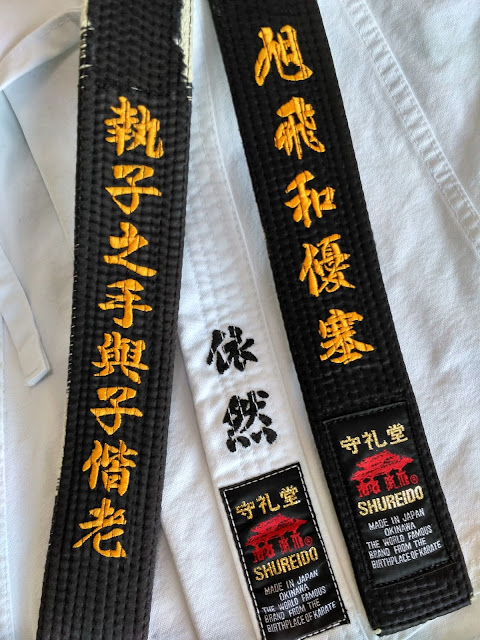My take on bunkai
If you have finished my book (available on this blog, and also if requested by email) then you should have some ideas about what my ideas about bunkai are.
Just in case, bunkai refers to the interpretation of the movements of the kata so they can be applied to defend yourself from an assailant.
From my learning, my reading, my research and my exchange of information with other martial artists I have come to this conclusions (list not exhaustive):
-The stances are there for a reason: a low stance means a body drop, usually carrying something (someone) down with you. A back stance means (usually) a defensive move and a forward stance an offensive action.
-An open hand means that you should grab something. A closed fist means that you should have something inside. Yeah, pretty contradictory but it shows the principle that both hands should be doing something at all times.
-Crossing the feet means that you are throwing. A 90º or 270º turn means a throw. A jump means a throw. You need to reposition your feet, twist your body and then use some force to lift the guy up before you slam the ground with his head.
Imagine harai goshi/tai otoshi/ippon seoi/morote nage/o goshi type of throw:
-A kick usually means you kick the other guy. Usually a low kick. All kicks were low level until more athletic and healthy karateka started competing (me included). In a self-defense situation most people will recommend not to kick high because it exposes the groin (I never got hit on the groin as a reaction to a head kick) and because it reduces your balance (Do you use to fall down when kicking in your dojo? Me neither). Anyway, if you are like me and wear jeans most of the time avoid high kicks because you will rip your pants and/or will miss the target.
By the way, you don't need to use the kick that is present on your particular style version of the kata. Any kick that land on target (even hiza geri/knee kick are ok).
-A punch means you are punching.
-A block can mean anything.
Literally.
Here is when we need a real expert.






There are no blocks in kata.
ReplyDeleteThis one is crucial if you're truly going to understand kata - It's not a punch.
Kata were created using explicit rules. Similar rules can be used to deconstruct and understand them.
There *is* one true original application, and it can be decoded. Obviously the karate tradition has been to hang good secondary applications on to kata.
Forgot to mention. As far as I can tell, all kicks are for manipulation rather than impact.
ReplyDeleteThanks for your comments!
ReplyDeleteWhen I say "block" I mean "all techniques labeled as uke", so, in a sense, the "blocks" are not "blocks" in the sense of kihon kumite, so I think we can agree on that.
But I say sometimes you need to block an incoming punch.
http://karatecla.blogspot.com/2017/02/jodan-age-uke.html
It's not a punch/all kicks are for manipulation: care to elaborate? Really interested on the kick thing.
And yes, there is only one true original application. Your school may have it or may not have it. My goal is to make my Karate useful for myself, be it original or not.
Could you provide a contact information so I we can see each other?